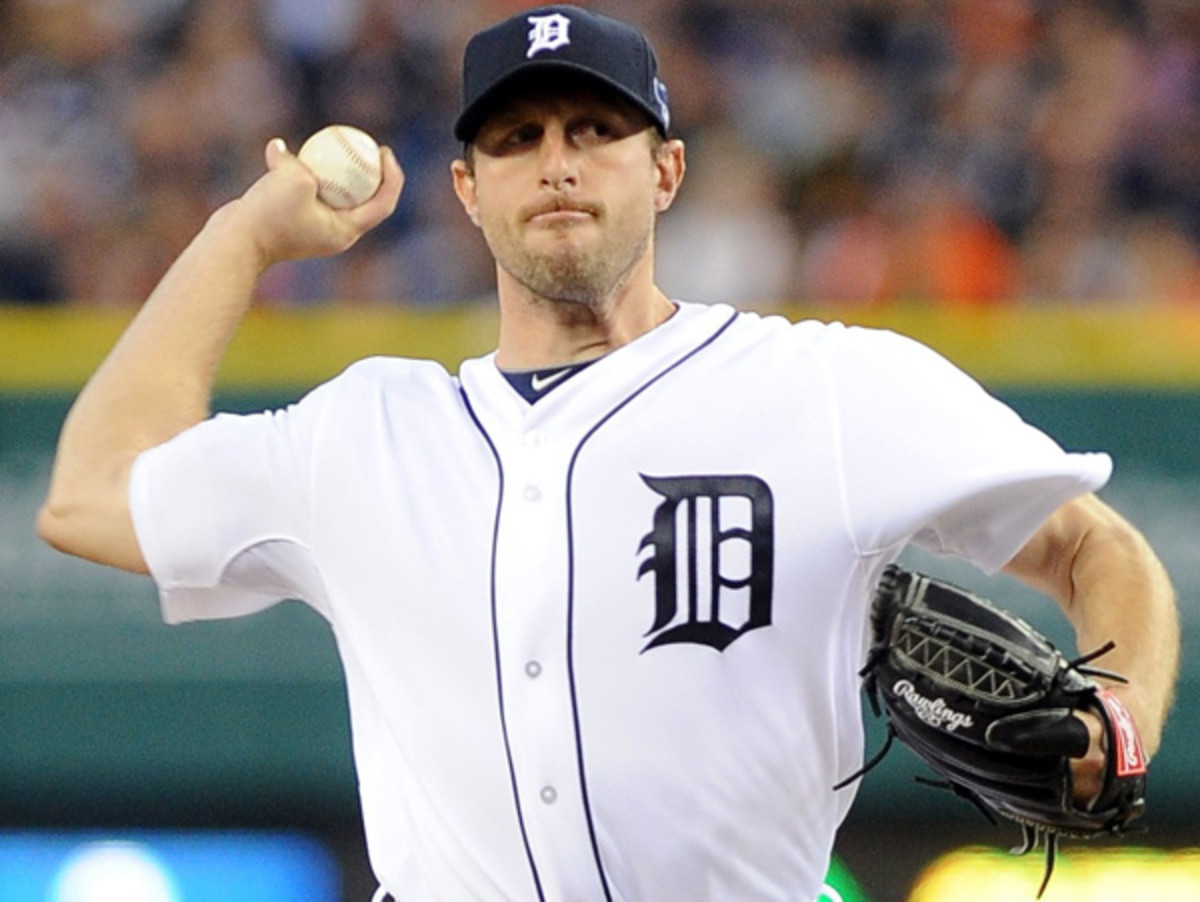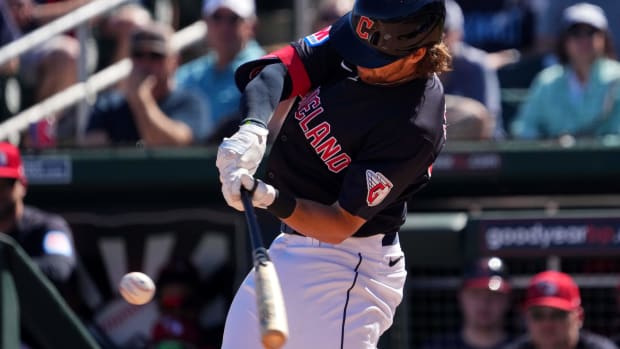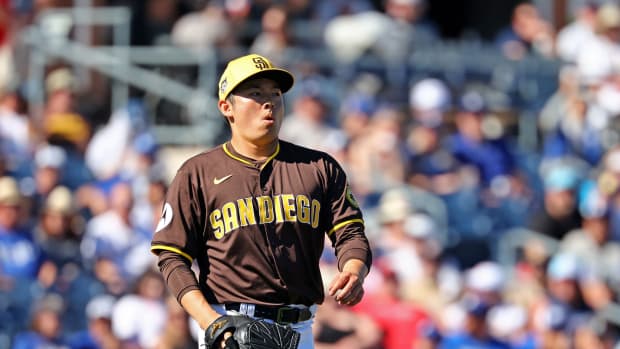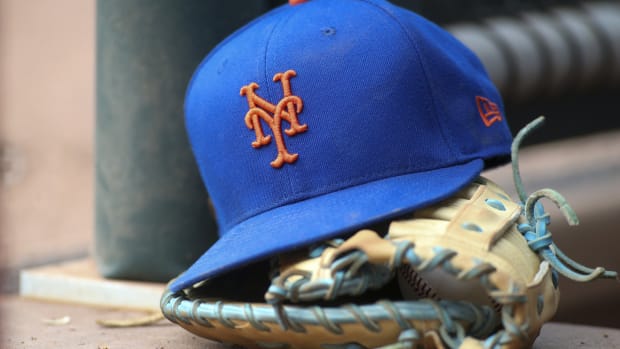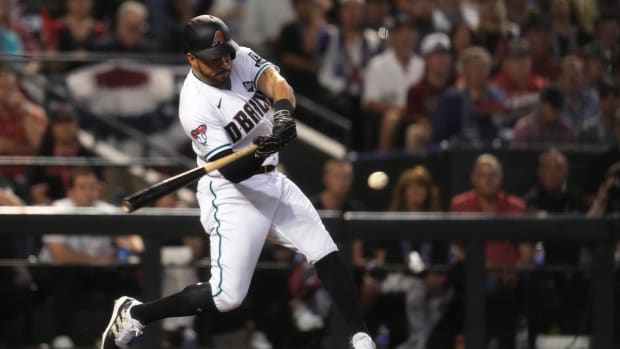Max Scherzer spurns Tigers' lucrative offer, headed toward free agency
Max Scherzer took home his first Cy Young award last season. (Lon Horwedel/AP)
You have reached your limit of 4 premium articles
Register your email to get 1 more
As Opening Day approaches, it's common for teams to announce contract extensions with key players, but when they can't hammer out deals, negotiations are often suspended until after the season, lest they become a distraction. On Sunday, the Tigers raised some eyebrows by taking the rare tack of announcing that Max Scherzer had rejected an offer that would have placed him among the game's highest-paid pitchers, and were thus tabling talks until next fall. The 2013 AL Cy Young winner now assumes the risk of living up to a career year in order to boost his value even further upon hitting the open market.
Scherzer set career bests across the board in 2013, with 21 wins, a 2.90 ERA, and 240 whiffs in 214 1/3 innings en route to 6.7 Wins Above Replacement. He started the All-Star Game, notched two more wins in the Division Series against Oakland (one in relief), and capped it all by receiving 28 of 30 first-place votes in the Cy Young balloting. Given what's known about the parameters of the deal, which would have paid him as though he'd occupied that 2013 level for years, it's a surprise that the 29-year-old pitcher (30 on July 27) and his team reached an impasse.
ESPN's Jayson Stark reported via an industry source that the Tigers' offer would have placed him among the top-six pitchers in average annual value. Counting down from Clayton Kershaw ($30.7 million), Justin Verlander ($25.7 million), Felix Hernandez ($25 million), Zack Greinke ($24.5 million) and CC Sabathia ($24.4 million), that means that Scherzer would have made more than the $24 million annual salaries of Cole Hamels and Cliff Lee. Fox Sports' Jon Morosi reported that the rejected deal was for six years and $144 million, or exactly $24 million per year. Either way, that seems out of line given his short track record of elite performance. His 10.9 WAR over the past two years ranks fifth in the majors behind Kershaw (14.0), Chris Sale (12.8), Verlander (12.4) and Lee (11.8), but if you expand the window to three years, his 12.2 WAR drops him into a tie for 12th, and his 15.5 WAR over four years is just 14th.
On the other hand, Scherzer is represented by Scott Boras, whose modus operandi is to take his players to the open market in search of top dollar. Examples of Boras clients passing up free agency and accepting hometown discounts — Elvis Andrus, Carlos Gonzalez and Jered Weaver — do exist, but they're the exceptions that prove the rule. The Detroit News' Lynn Henning, who noted that Boras commands five percent of his clients' contracts compared to the industry-standard three percent, suggested that he and Scherzer could be seeking a deal closer to $200 million, and that the breakoff suggests that the pitcher doesn't have a future in Detroit beyond this year: "This is their way of saying: We wish him well. He's finished with the Tigers."
Boras aside, those exceptions have become the rule throughout the industry, in that teams have gotten increasingly aggressive about locking up young players with extensions, though to be fair, those deals generally cover players who still have multiple years of arbitration eligibility remaining. Scherzer, however, is on the cusp of free agency, and if he makes it to market with his arm intact, he stands a solid chance of being the top pitcher on the market; none of Jon Lester, James Shields or Ervin Santana, all of whom could join him, has won a Cy Young or struck out more than a batter per inning during his careers. Lester has been a key part of two World Series winners, which trumps Scherzer's participation on one pennant winner.
While he could be the top free-agent pitcher available, Scherzer is taking a risk in needing another similarly strong season to secure such cash, and that's something his resumé lacks. Prior to 2013, he had never reached 200 innings, had a full-season ERA below 3.50, a WAR above 4.2 or made an All-Star team, though in 2012 he did lead the AL in strikeout rate (11.1 per nine) and rank in the top-10 in WAR (eighth at 4.2). As Santana — who was believed to be seeking a nine-figure deal at the outset of the winter, then settled for a one-year, $14.1 million deal — found out, thin track records and unrealistic expectations can provide a rude awakening.
How big a risk is it that Scherzer's follow-up season won't measure up? Via a quick and dirty study of 21 Cy Young winners from 2002 through 2012 (excluding Eric Gagne, the only reliever to win in that span), I found that in addition to only one pitcher winning back-to-back Cy Young awards (Tim Lincecum), three saw their innings totals drop by more than 100 from year to year due to injuries, and three slipped to a league-average ERA (100 ERA+) or worse in their follow-up season. Only 11 of those 21 even received a vote in the next year's Cy Young race, and three of those 11 finished fifth or lower, which is to say that they received token support. A whopping 18 of the 21 declined in WAR, eight by at least 3.4 wins. Two of the three who did decline not saw their WAR increase by no more than 0.6.
Here's what the averages of those 21 Cy Young-winning seasons and their follow-ups look like:
Year | W-L | ERA | FIP | ERA+ | GS | IP | SO | SO/9 | WAR |
Cy | 20-6 | 2.68 | 3.08 | 159 | 33 | 235 | 227 | 8.7 | 7.3 |
Cy+1 | 13-10 | 3.14 | 3.32 | 134 | 30 | 206 | 188 | 8.2 | 4.9 |
In their follow-ups, the pitchers almost invariably backslid in the major categories; their workloads dropped by 12 percent and their strikeout rates by six percent, and their ERAs increased by 25 percent relative to the league. Some of that was luck or randomness; where the winners beat their Fielding Independent Pitching marks by 0.40 per year, the follow-ups did so by just 0.18. Since Baseball-Reference.com's version of WAR is driven by actual runs allowed (whereas FanGraphs' is driven by FIP), those pitchers' values dropped by a whopping 33 percent, though they were still very valuable.
At this winter's going rate of $5.45 million per win — the estimate of ESPN Insider's Dan Szymborski based on this year's free-agent market — that 4.9 WAR translates to $26.7 million, but it's not as though you can expect a pitcher to maintain that level automatically as he ages. A 2012 study by FanGraphs' Bill Petti covering pitchers from 2002 to 2011 shows that for starters, FIP tends to increase much more sharply from age 31 onward than before, while velocity plummets precipitously and strikeout rate and other peripherals move in the wrong directions as well.
If Scherzer shows signs of falling off, it will be a challenge to move substantially beyond the Tigers' reported offer in terms of either years or length, though an open market, where teams such as the big-spending Yankees and Dodgers are bidding, could change that in a hurry.
As with any Boras negotiation, this situation has its share of spin and drama attached. In this case, it starts with a dispute over who rejected whom. Via ESPN, here's the Tigers' statement:
"The Detroit Tigers have made a substantial, long-term contract extension offer to Max Scherzer that would have placed him among the highest-paid pitchers in baseball, and the offer was rejected.
"As we have reiterated, it has been the organization's intent to extend Max's contract and keep him in a Tigers uniform well beyond the 2014 season. While this offer would have accomplished that, the ballclub's focus remains on the start of the upcoming season, and competing for a World Championship. Moving forward there will be no further in-season negotiation and the organization will refrain from commenting on this matter."
Here's how Boras characterized it:
"Max Scherzer made a substantial long-term contract extension offer to the Detroit Tigers that would have placed him among the highest-paid pitchers in baseball, and the offer was rejected by Detroit… Max is very happy with the city of Detroit, the fans and his teammates, and we will continue negotiating witth the Tigers at season's end.''
By engaging with Boras in such public fashion, the Tigers have placed themselves at a disadvantage, PR-wise. This past winter's surprising trades of Prince Fielder and Doug Fister were said to be aimed at increasing the team's payroll flexibility so as to retain Scherzer and Miguel Cabrera, whose deal runs through 2015. The Fielder deal trimmed $76 million in future payroll and filled Detroit's second base void with Ian Kinsler. Now, instead of quietly letting a non-deal with Scherzer slip below the radar, the Tigers have called attention to it, which heightens the pressure on owner Mike Ilich and general manager Dave Dombrowski to retain Cabrera; via Morosi, talks with the two-time AL MVP have begun, but they're at "a very preliminary" stage.
Additionally, the prospect of Scherzer's departure raises the question of why the team didn't choose to deal him instead of Fister, who brought back an underwhelming return — one that included a utilityman (Steve Lombardozzi) dealt to Baltimore on Monday for non-roster invitee Alex Gonzalez — for a pitcher who still has one more year of arbitration eligibility after this one. Though not the strikeout machine that Scherzer is, Fister (who's only six months older) has been the more valuable of the two over the past three years, 12.6 WAR to 12.2.
That said, it's tough to fault the Tigers for not wanting to pay Scherzer more than they're paying Verlander, who owns his own Cy Young award plus two other top-three finishes and has averaged 5.1 WAR — again, a mark Scherzer surpassed only in 2013 — over the past eight seasons. It's also tough to fault Scherzer for going big; whether he signs now or next winter, this is almost certainly going to be the biggest deal of his career. If he wants to risk a massive payday in pursuit of an even more massive one, he's earned that right. For all of the drama, this is business as usual.
This article has been corrected with regards to Justin Verlander's Cy Young history.






























